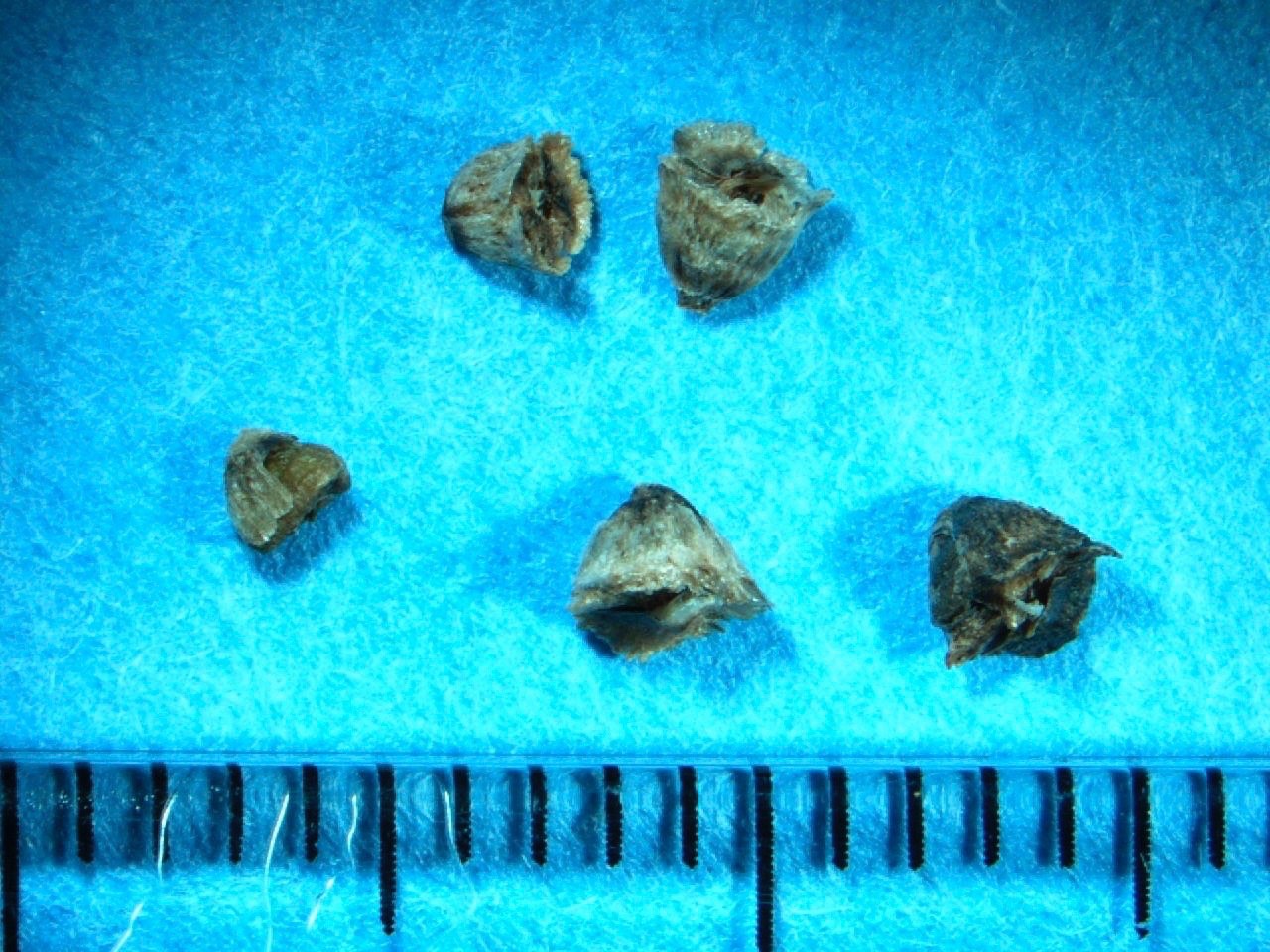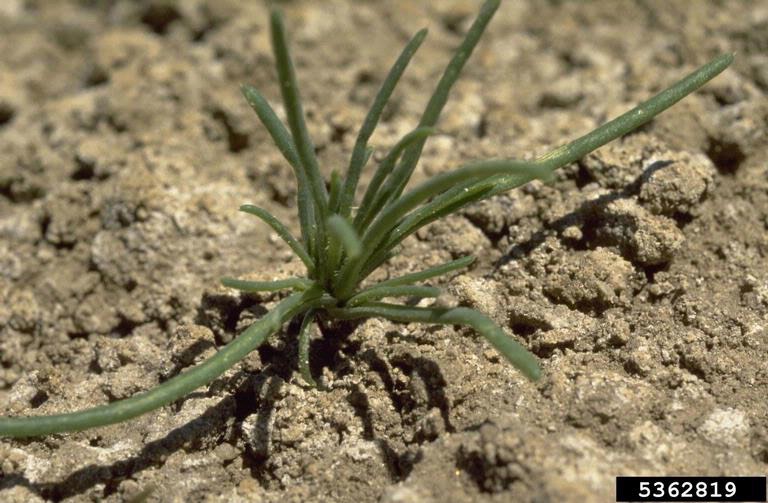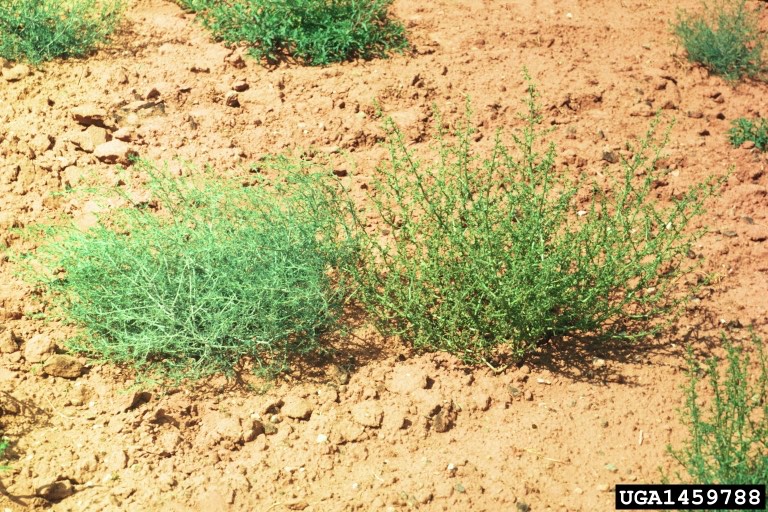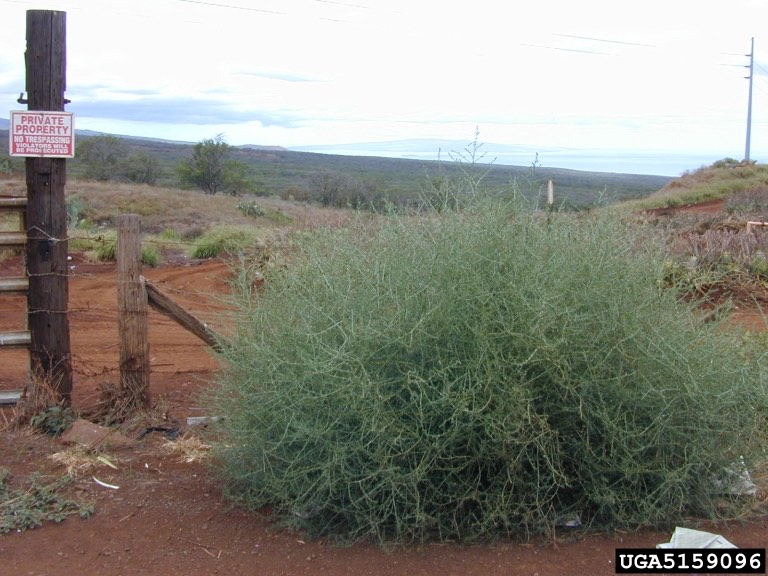Ohio’s Noxious Weeds
Russian thistle
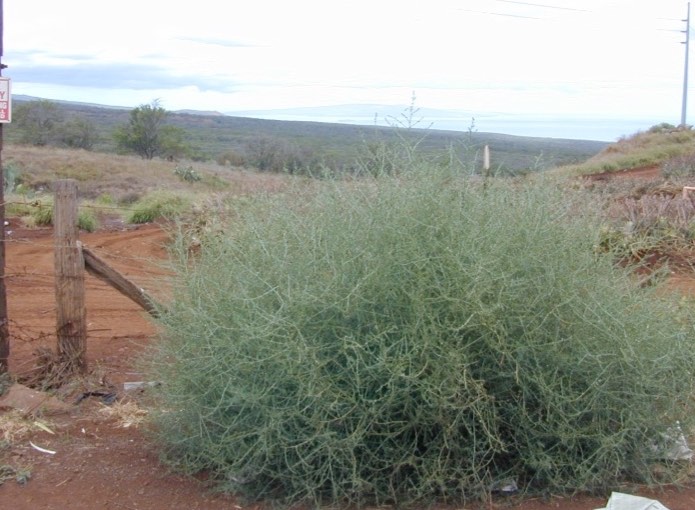
Salsola iberica, Russian thistle
Family: Goosefoot, Chenopodiaceae.
Habitat: Dry wastelands or spring-sown field crops during dry seasons. Not common in Ohio.
Life cycle: annual.
Growth Habit: 1-2 feet high, multi-branched.
Leaves: Under 1 inch long, sharp-pointed, awl-shaped, dull-green or grayish. Early leaves are soft and elongated, leaves formed later are short, stiff and prickle-pointed, often turning red. A unique and easy-to-identify weed.
Stem: Becomes stiff and woody with age. At maturity this plant breaks from its root and becomes a tumbleweed, scattering seed across open fields.
Flower: Small inconspicuous flowers with red or pink sepals located in the upper branches; note that the bottom left picture (Figure 25) is magnified.
The problem is…. Seeds are spread by windblown tumbleweeds. It frequents dry habitats and is found more commonly in the west central states.
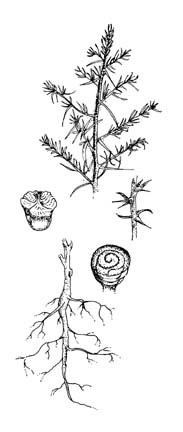

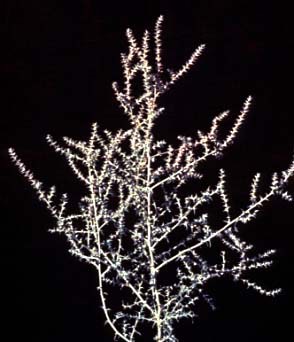
Russian thistle, a pest of drier areas, has yet to become an established problem in Ohio. *photos courtesy of Arlyn W. Evans, Memphis, TN.
